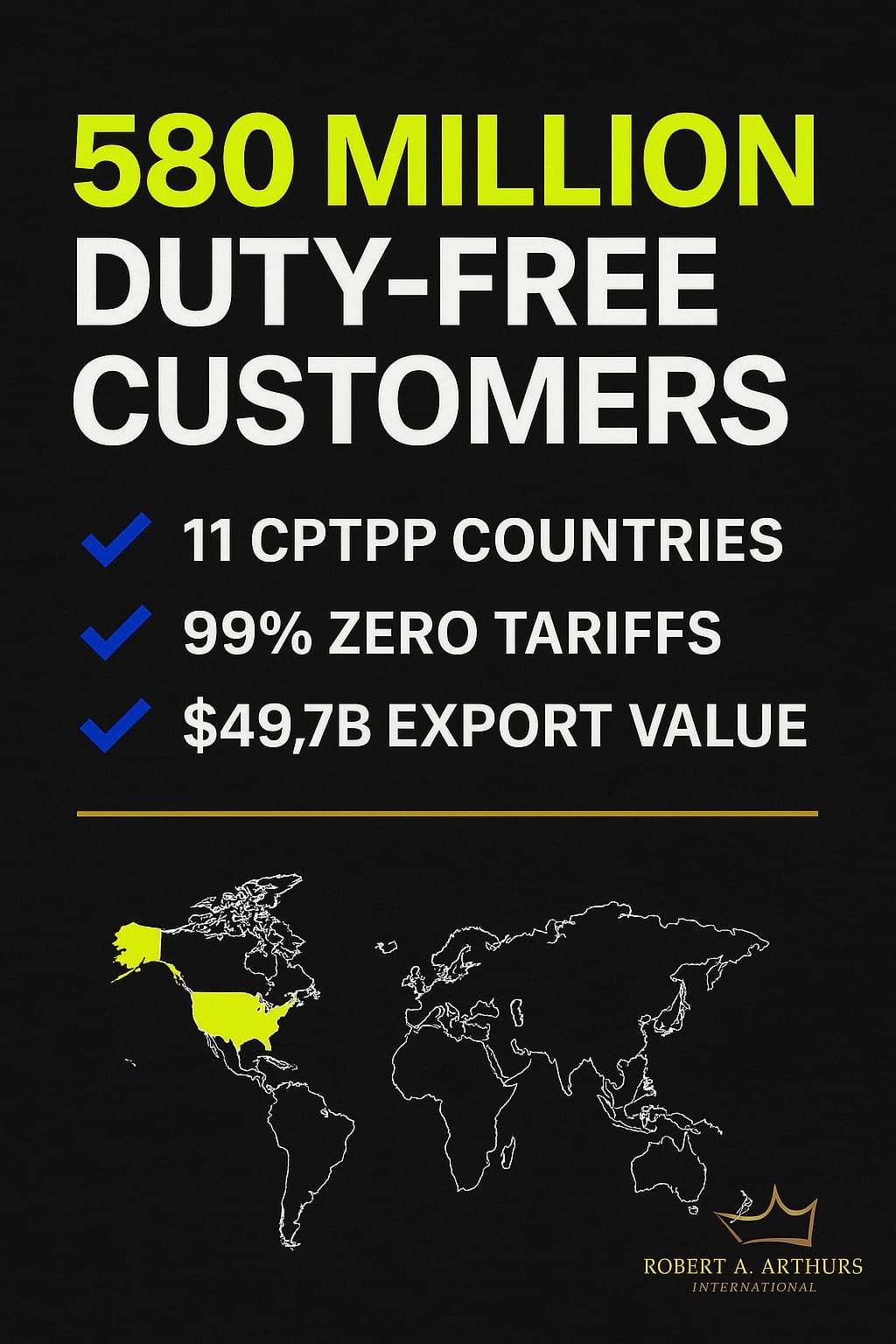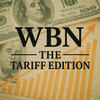
YOUR BUSINESS IS MISSING OUT ON 580 MILLION DUTY-FREE CUSTOMERS.
Small Canadian exporters are leaving billions in sales on the table by ignoring the CPTPP trade agreement:
I just met with a Vancouver manufacturer who doubled their revenue in 6 months once they shifted from costly U.S. exports to CPTPP markets. They're now selling to Japan with no tariffs, where their competitors face 15% duties.
Yet 66% of Canadian SMEs cite high shipping costs, and 50% point to duties and taxes as major export barriers. https://www.edc.ca/en/guide/exporting-challenges-solutions.html
Here's what you're missing: The CPTPP trade agreement connects your products to 11 countries representing 15.6% of global GDP and 580+ million consumers. Nearly 99% of tariff lines are duty-free.
Canada is chairing the CPTPP Commission in 2024 with a specific mandate to increase SME participation. I've spent 36 years in global trade, and I've never seen a better time for small businesses to expand internationally.
Why SMEs should act now:
• CPTPP markets collectively represent $49.7 billion in Canadian exports annually https://www.international.gc.ca/trade-commerce/trade-agreements-accords-commerciaux/agr-acc/cptpp-ptpgp/index.aspx
• Countries include Japan, Australia, Vietnam, Malaysia, Singapore, and Mexico—many with previously high tariffs now eliminated
• Canadian businesses using the Trade Commissioner Service support export 20% more in value than non-users
• Ontario and BC are the largest provincial CPTPP exporters with immediate growth potential
How to leverage this opportunity:
• Start with one specific CPTPP market matching your product strengths
• Verify your product's eligibility for duty-free treatment through the tariff finder tool
• Obtain a Certificate of Origin to qualify for preferential tariff rates
• Connect with the Trade Commissioner Service for market-specific intelligence
• Apply for CanExport SME funding (up to $50,000) to support market development
Avoid these common CPTPP export mistakes:
• Treating all CPTPP markets as a single strategy—each country needs specific adaptation
• Missing documentation requirements that disqualify you from tariff benefits
• Attempting market entry without understanding local business cultures and regulations
• Overlooking shipping logistics and supply chain complexities in Asian markets
• Failing to protect intellectual property before market entry
Next step: Use the free CPTPP Tariff Finder tool to check if your products qualify for zero-tariff treatment. https://www.international.gc.ca/trade-commerce/trade-agreements-accords-commerciaux/agr-acc/cptpp-ptpgp/tariff-elimination-droits.aspx
With the right approach, even small Canadian businesses can establish footholds in these dynamic markets while larger competitors struggle with market entry barriers. But timing matters—these advantages shrink as more companies catch on.
Connect with me to explore further. I've guided hundreds of businesses through trade agreements and can help you identify your highest-potential CPTPP opportunity.
LinkedIn: https://www.linkedin.com/in/robertarthurs/
Robert Arthurs is the founder of Robert Arthurs International, a global business mechanic with 23 years of experience fixing businesses and fueling international trade strategies for entrepreneurs across Canada and beyond
#International Trade #CPTPP #Canadian Exporters #SME growth #Export Development #Global Trade #Market Expansion #robert arthurs international #bc fast cats




